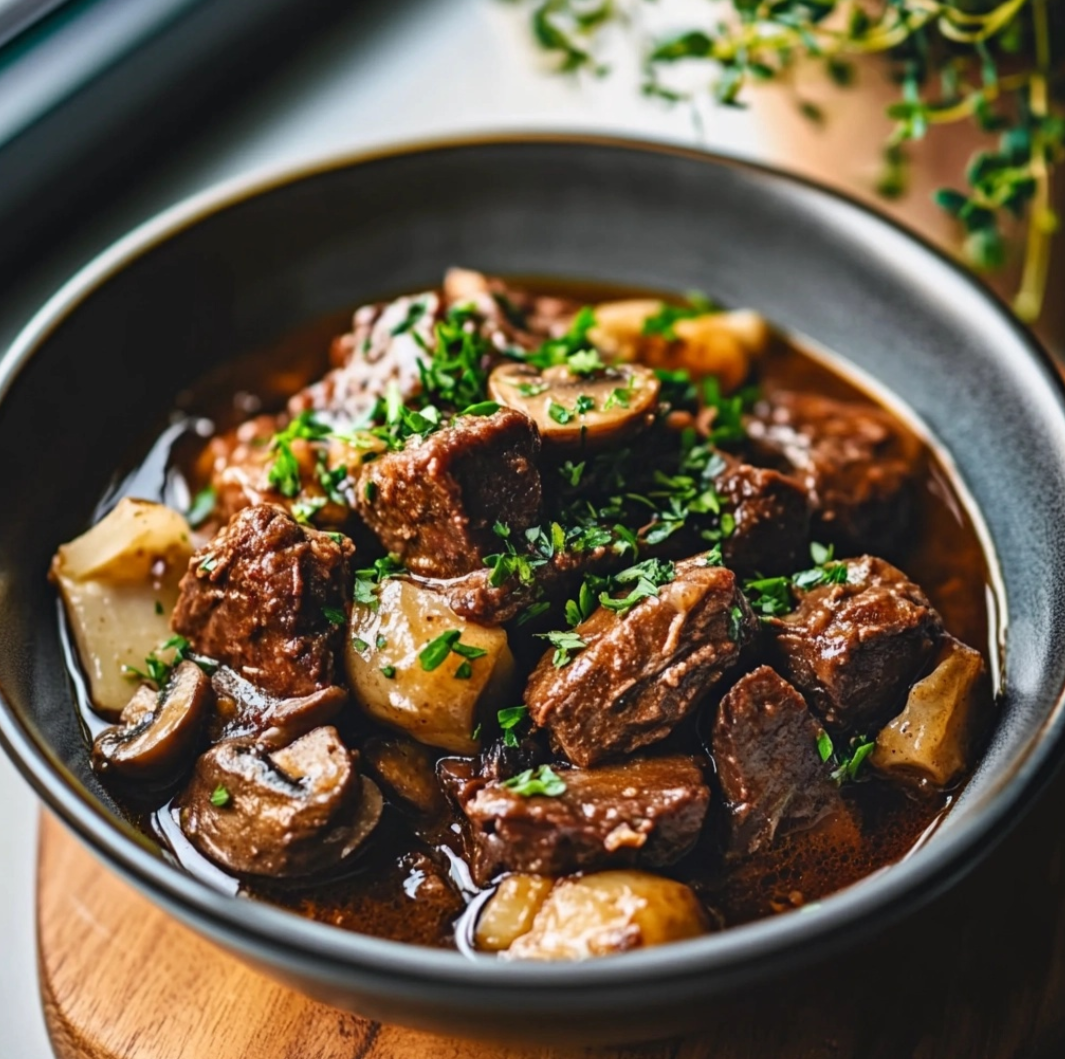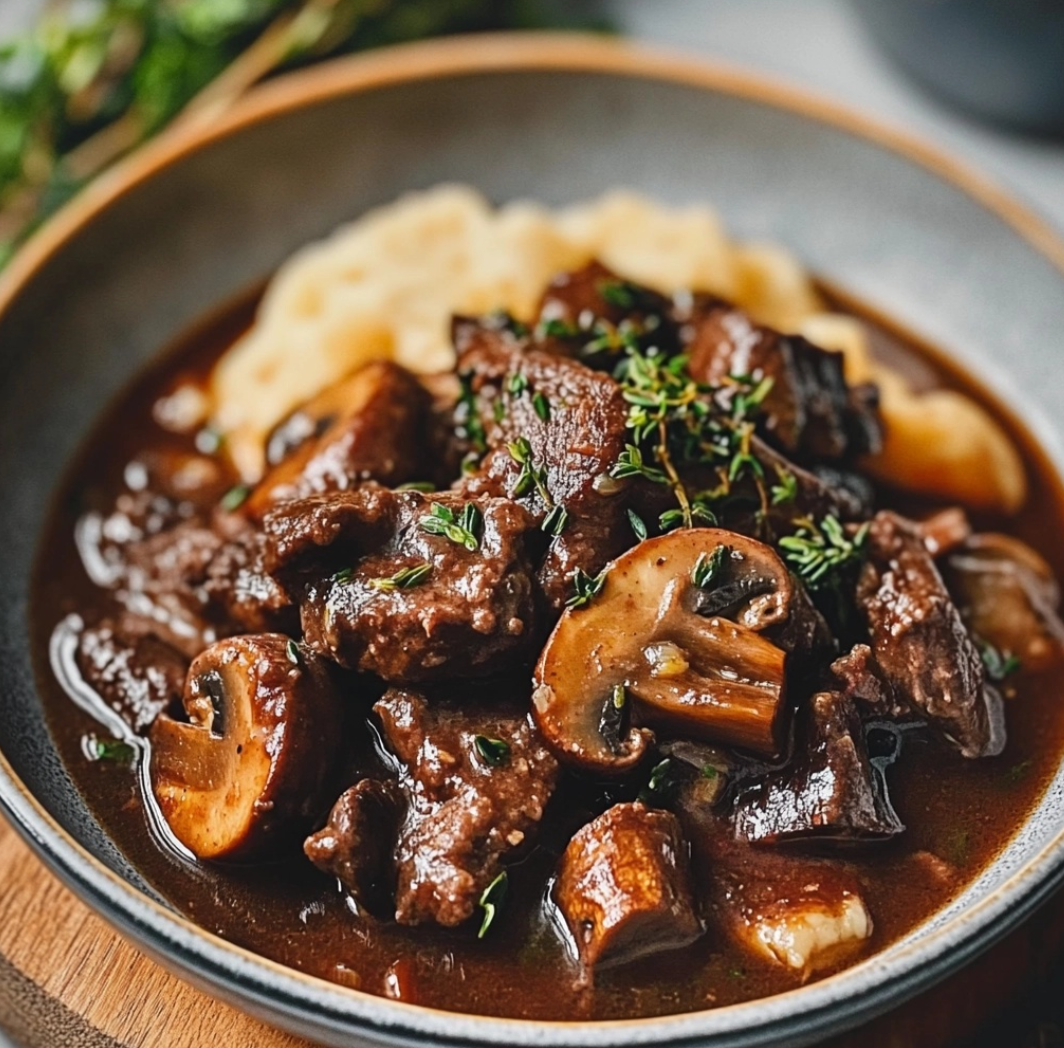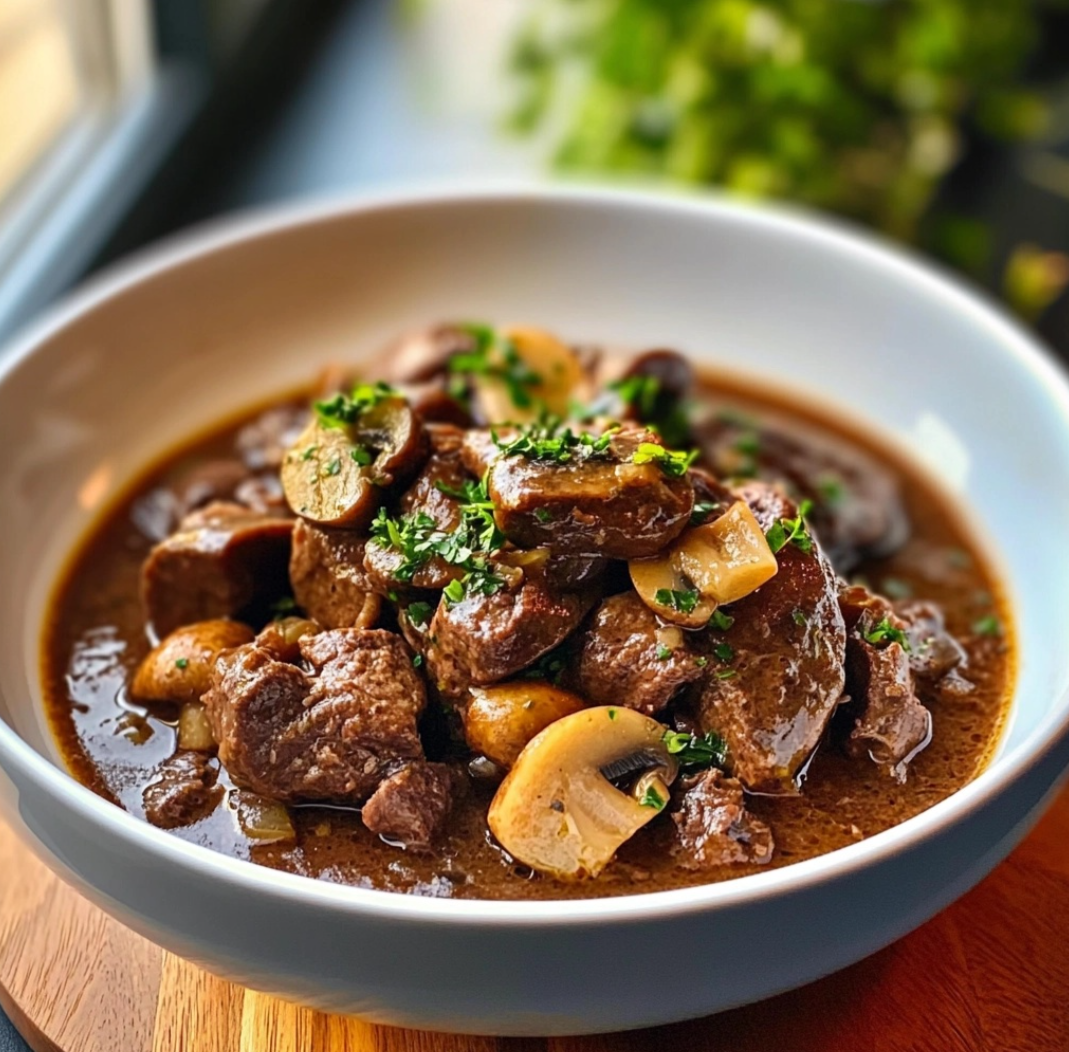Introduction to Classic French Beef Stew
The origins of beef stew can be traced back to rustic French cooking, where ingredients were often simple but prepared with care and attention. This dish has become a staple in households around the world, cherished for its rich flavors and comforting qualities.
At its heart, Classic French Beef Stew is all about layers of flavor. Starting with quality ingredients, the combination of beef, vegetables, and herbs slowly simmered creates a harmony that’s both satisfying and delicious. The addition of red wine not only enhances the stew’s depth but also tenderizes the beef, making it melt-in-your-mouth tender.
Traditionally served with crusty bread or over creamy mashed potatoes, this stew offers a culinary experience that evokes warmth and nostalgia. Perfect for family dinners or gatherings, it’s a dish that allows for creativity and adaptation, making it suitable for various dietary preferences.
In this article, we’ll take you step-by-step through the basics of the recipe, advanced cooking techniques to elevate your dish, maintenance tips for best results, dietary adaptations for different needs, and frequently asked questions to ensure your beef stew turns out perfect every time.

Basic Recipe for Classic French Beef Stew
Ingredients
To make this Classic French Beef Stew, you’ll need the following ingredients:
- 3 lbs beef chuck, cut into 2-inch pieces
- 6 slices bacon, chopped
- 1 large onion, finely chopped
- 3 carrots, sliced
- 2 garlic cloves, minced
- 2 cups mushrooms, sliced
- 4 cups beef broth
- 1 cup red wine
- 2 tablespoons tomato paste
- 1 teaspoon dried thyme
- 1 bay leaf
- Salt and pepper to taste
- 2 tablespoons olive oil (for browning)
Instructions
- Sauté the Bacon: In a large pot or Dutch oven, heat the olive oil over medium heat. Add the chopped bacon and cook until crispy. Remove the bacon and set aside, keeping the bacon fat in the pot for flavor.
- Brown the Beef: Add the beef chunks to the pot in batches, browning them on all sides for about 5-7 minutes per batch. This step is crucial for developing the stew’s rich flavor. Once browned, remove the beef and set it aside.
- Sauté Vegetables: Add the chopped onion and sliced carrots to the pot, sautéing for about 5 minutes until softened. Stir in the minced garlic and sliced mushrooms, cooking for another 2-3 minutes until the mushrooms release their moisture.
- Combine Ingredients: Return the browned beef and crispy bacon to the pot. Pour in the beef broth and red wine, then add the tomato paste, thyme, bay leaf, and season with salt and pepper.
- Simmer the Stew: Bring the mixture to a gentle boil, then reduce the heat to low. Cover the pot and let it simmer for 2-3 hours, stirring occasionally, until the beef is fall-apart tender.
- Serve: Once the stew is ready, skim off any excess fat from the surface, taste, and adjust seasoning as needed. Ladle the hearty stew into bowls and enjoy hot!
This straightforward recipe serves as a base for a comforting meal that can be easily customized or enhanced with various flavors.
Advanced Techniques for Elevating Your Stew
To truly make your Classic French Beef Stew stand out, consider these advanced cooking techniques that can elevate the dish’s complexity and flavor profile.
1. Browning the Meat Properly
Achieving a deep, rich flavor starts with proper browning of the beef. Make sure to:
- Pat the beef dry with paper towels before adding it to the pot; this helps achieve a better sear.
- Avoid overcrowding the pot; brown the meat in batches to ensure each piece gets sufficient contact with the heat.
2. Layering Flavors
Adding layers of flavor enhances the overall taste of your stew. Consider:
- Deglazing the pot after browning the meat by adding a splash of red wine or beef broth to lift the browned bits off the bottom, which adds a depth of flavor.
- Incorporating fresh herbs such as rosemary or parsley at the end of cooking for a fresh, aromatic finish.
3. Adjusting the Cooking Time
Different cuts of beef may require varying cooking times. If using tougher cuts like brisket, you may need to extend the simmering time. Alternatively, if using tender cuts, reduce the cooking time to prevent overcooking.
4. Thickening Techniques
If you prefer a thicker stew, there are several methods to achieve this:
- Creating a roux: Combine equal parts of flour and fat (butter or olive oil) and cook until golden, then whisk into the stew.
- Using cornstarch slurry: Mix cornstarch with cold water and stir into the stew during the last few minutes of cooking.
5. Flavor Enhancements
Consider adding unique ingredients to customize your stew:
- Mushroom varieties: Using a mix of shiitake, cremini, and portobello mushrooms can introduce new textures and flavors.
- Spices: Adding a pinch of smoked paprika or a dash of cayenne pepper can provide a subtle warmth.
By implementing these techniques, you can transform a basic beef stew into a dish worthy of any gourmet kitchen.

Maintenance Tips for Perfect Beef Stew
To ensure your Classic French Beef Stew is always perfect, follow these maintenance tips:
1. Storage and Reheating
- Refrigeration: Store leftovers in an airtight container in the refrigerator for up to 3-4 days. The flavors will continue to meld, making the stew even tastier the next day.
- Freezing: Beef stew freezes well! Store in freezer-safe containers for up to 3 months. Thaw in the refrigerator overnight before reheating.
2. Reheating Methods
When reheating, do so gently to maintain the texture:
- Stovetop: Heat over low to medium heat, stirring occasionally until warmed through.
- Microwave: Heat in short intervals, stirring between, to ensure even warming.
3. Fresh Ingredients
For optimal flavor, consider:
- Adding fresh herbs right before serving. Fresh thyme or parsley can brighten the dish.
- Using quality beef broth: Opt for low-sodium, homemade broth when possible, as this can significantly affect the stew’s taste.
4. Texture Maintenance
To keep the beef tender and the vegetables from becoming mushy, avoid overcooking. Follow the recommended simmering times and check for tenderness regularly.
By adhering to these maintenance tips, you can enjoy a consistently delicious and hearty beef stew any time.
Dietary Adaptations for Classic French Beef Stew
Classic French Beef Stew can be adapted to suit various dietary needs without sacrificing flavor. Here are some alternatives and substitutions:
1. Gluten-Free Version
To make a gluten-free stew:
- Use gluten-free flour or cornstarch for thickening instead of regular flour.
- Ensure that your beef broth and any additional ingredients are certified gluten-free.
2. Lower-Carb Adaptation
For a lower-carb version, consider:
- Replacing carrots with turnips or celery root to reduce carbohydrate content.
- Omitting the wine or substituting it with more beef broth or a splash of vinegar for acidity.
3. Vegetarian/Vegan Option
For a vegetarian or vegan stew:
- Substitute beef with mushrooms (like portobello or shiitake) or jackfruit for a meat-like texture.
- Use vegetable broth instead of beef broth and skip the bacon, adding olive oil for flavor.
4. Dairy-Free Adaptation
This recipe is naturally dairy-free. Ensure any additional flavorings or sides are also dairy-free, like serving it with dairy-free bread or alternatives.
These dietary adaptations allow everyone to enjoy a comforting bowl of stew, making it a versatile recipe for gatherings or family dinners.

FAQs about Classic French Beef Stew
1. Can I use a slow cooker for this recipe?
Absolutely! You can adapt this recipe for a slow cooker by following the browning steps on the stovetop and then transferring everything to the slow cooker. Cook on low for 6-8 hours or high for 3-4 hours until the beef is tender.
2. What can I serve with beef stew?
Classic accompaniments include crusty bread, mashed potatoes, or even a simple green salad. You can also serve it over noodles or rice for a hearty meal.
3. Can I add other vegetables?
Yes! Feel free to add seasonal vegetables like parsnips, potatoes, or peas. Just be mindful of the cooking times, as different vegetables may require varying lengths of time to become tender.
4. How do I know when the beef is done?
The beef is done when it is fork-tender and falls apart easily. This usually takes 2-3 hours of simmering, depending on the size of your beef chunks.
5. Is it necessary to use red wine?
While red wine adds depth of flavor, it’s not strictly necessary. You can substitute it with more beef broth or a splash of vinegar for acidity. However, if using wine, choose one that you enjoy drinking.
These frequently asked questions help clarify common concerns, ensuring your beef stew turns out deliciously every time you make it.

